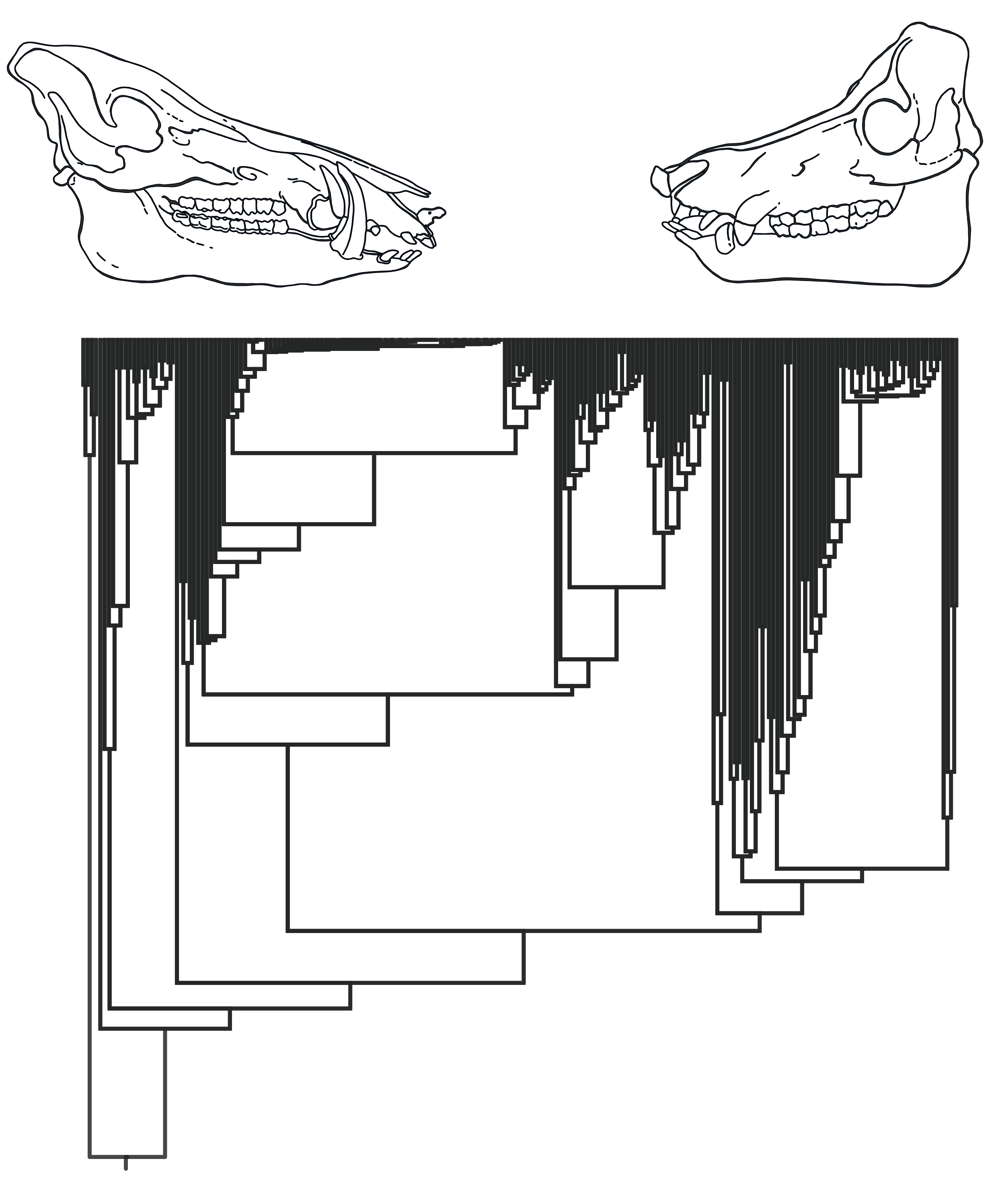Within the next decade an estimated 1million species are likely to face extinction because of human activities potentially triggering Earth’s 6th mass extinction. Conservation biologists, including many veterinarians, are making use of state-of-the-art scientific methodology to reverse this trend. The aim of this module, which features multiple lectures from prominent external scientists, is to provide veterinary and biology students interested in wildlife conservation with a good understanding of the challenges faced by modern conservationists and how modern scientific techniques can be mobilized to improve conservation programs.
- Dozent/in: Alberto Carmagnini
- Dozent/in: Rosie Drinkwater
- Dozent/in: Laurent Frantz
- Dozent/in: Olaf Thalmann
In this lecture series we will introduce various domestication concepts, summarize the current knowledge as well as shed new light into the history of some of the most important domesticates such as bees, cattle, horses or dogs. By inviting experts in the field we will mainly focus on the information hidden in the archeological record and the genomes of those animals and their respective wild ancestors. Ultimately, we are addressing the when and where or the how and why of domestication and thereby provide a comprehensive overview of how some of the wildest beasts became tamed.
- Dozent/in: Alberto Carmagnini
- Dozent/in: Laurent Frantz
- Dozent/in: Olaf Thalmann
Die Vorlesung bietet eine Einführung in die Kulturgeschichte der Haustiere basierend auf der Analyse von Tierresten aus archäolgischen Ausgrabungen in der alten Welt.
- Dozent/in: Veronika Goebel
- Dozent/in: Ptolemaios Paxinos
- Dozent/in: Joris Peters
- Dozent/in: Simon Trixl

- Dozent/in: Alberto Carmagnini
- Dozent/in: Rosie Drinkwater
- Dozent/in: Laurent Frantz
- Dozent/in: Olaf Thalmann
Vergleichende Osteologie bei Haus- und Wildsäugetieren (Auswahl): Os coxa, Femur, Tibia/Fibula, Tarsalia, Metapodia
- Dozent/in: Veronika Goebel
- Dozent/in: Ptolemaios Paxinos
- Dozent/in: Simon Trixl
| Es wird auf die geschichtliche Entwicklung von Instrumenten, Apparaten und Techniken und deren Einsatz in verschiedenen (klinischen) Disziplinen eingegangen. Themen sind u. a.: Gynäkologie, Geburtshilfe, Chirurgie, Radiologie, Augenheilkunde |
- Dozent/in: Veronika Goebel
- Dozent/in: Michaela Pfeuffer
- Dozent/in: Mathilde Schmuck
| Basierend auf der Analyse von Tierresten aus archäologischen Ausgrabungen erforscht die Paläoanatomie die Kulturgeschichte der Haustiere und das Mensch-Tier-Umwelt-Verhältnis in vor- und frühgeschichtlicher Zeit. Dies erfordert eine enge Zusammenarbeit zwischen den Natur- und Geisteswissenschaften, was anhand ausgewählter Beispiele aus der Forschung verdeutlicht werden soll. |
- Dozent/in: Veronika Goebel
- Dozent/in: Ptolemaios Paxinos
- Dozent/in: Joris Peters
- Dozent/in: Simon Trixl
| Vergleichende Osteologie bei Haus- und Wildsäugetieren (Auswahl): Vorderextremität |
- Dozent/in: Veronika Goebel
- Dozent/in: Ptolemaios Paxinos
- Dozent/in: Joris Peters
- Dozent/in: Simon Trixl